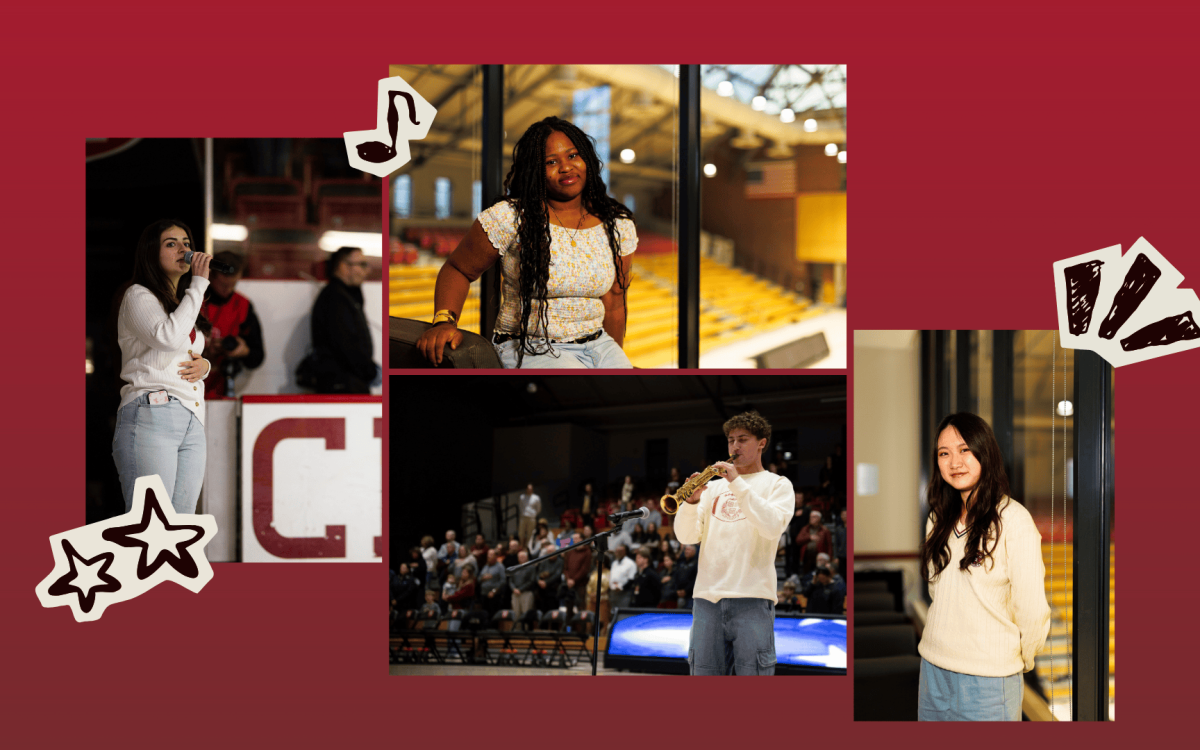A theology of culture
Scholar looks to update philosopher’s dialogue with the arts
Half a century ago, German theologian and philosopher Paul Tillich (1886-1965) was among the most influential Protestant thinkers in the world.
Today, he is not read as much, but Russell Re Manning wants to do something about that. For one thing, the University of Aberdeen scholar wants to update Tillich’s theology of art and culture. That requires “re-enacting” threads of thought that were shaped by Weimar Germany eight decades ago to make them resonate in the 21st century, said Re Manning, who delivered the fall’s Paul Tillich Lecture at the Memorial Church at Harvard on Nov. 14.
The list of Tillich lecturers since 1990 includes Edward O. Wilson, the Rev. Peter J. Gomes, and President Emeritus Nathan M. Pusey, who brought Tillich to Harvard as a University Professor (1954-62). While in Cambridge, Tillich published his three-volume magnum opus, “Systematic Theology.”
Starting in 1919, Tillich created a diverse canon of work. One of his legacy ideas was that theology should only be seen in dialogue with science, culture, and art. That was a radical concept following World War I, when religion largely denied the validity of culture, and when culture in turn widely denied the viability of religion.
Into these divided worlds, Tillich introduced the idea that culture and religion are within each other. His “existential concept of religion” eliminated the gap between the sacred and the secular. Tillich called religion “the state of being grasped by an ultimate concern.” In turn, he said, culture was “the form of religion” which, era by era, expresses “intimate movement of the soul” as art. To this end, Tillich famously referred to Picasso’s “Guernica” as “the greatest Protestant painting after 1900.” In his “Theology at the End of Culture” (Peeters, 2005), Re Manning said Tillich saw this explicit war painting as a protest against the way humans are simultaneously estranged from the divine (genocide) and embrace it (art).
Tillich’s “mediating” theology of culture called for a creative engagement with science and art, said Re Manning — though he suggested that a line should always exist between the sacred and the secular. There is a danger in religion endorsing any culture, as when Tillich apprehended “the religious significance of National Socialism,” he said. The philosopher — who served as a German Army chaplain during World War I — recognized the religionlike fervor of the Nazi state early on. In 1933 he was the first non-Jewish professor to be banned from a German university.
But Tillich, a Lutheran with a taste for German high culture, still developed a relationship with “a staggeringly broad” range of products, said Re Manning, including German expressionism and its low-culture flirtations with horror, absurdity, and insanity.
In the Weimar period, said Re Manning, the secular world was amid “a headlong rush to modernity,” while religion was pushed into a “defense against culture.” Tillich, he added, was interested in finding a common ground, his “cultural theology.”
It was conceived during the 1920s and ’30s, when a central problem was a separation between culture and religion, said Re Manning. After World War II came the “death of God” and a rejection of all claims that religion might have on culture. It was “not an invitation to new meaning,” said Re Manning, but “a blank soullessness [in which] all is surface.”
By 1965, when Tillich delivered his last lecture on theology and art, the aging philosopher “appears somewhat stunned” at the creative process in the age of Jasper Johns, Robert Rauschenberg, and other artists who seemed to offer “a wisdom that ignored wisdom.” The music of the time, too, “denies the muses,” said Tillich, who thought it seemed more a collection of noises than art.
What was left, he said in 1965, was “a whole cemetery of dead categories in art,” along with “a kind of metaphysical dizziness.”
In the 21st century, it is necessary to “go beyond Tillich’s own formula” in order to describe the intersections of theology and art, said Re Manning. In this era, he sees a turning away from “the dominant trope of post-modern irony” and “a new seriousness emerging.” The new seriousness has to confront what Re Manning called “the only imaginable reality left,” post-industrial capitalism. That confrontation — manifested in the Occupy movements around the world — points to a fundamental confusion: Among the many international crises — over development, the environment, and markets — capitalism is “simultaneously implicated as both cause and solution,” said Re Manning.
This is a “culture without a future,” he said. So what role is there for religion? For Tillich, the future was socialism, said Re Manning, but for us there seems only to be “the endlessly repeating future” of capitalism.
So today, employing the tools that Tillich left behind, religion might call on its utopian dimension, said Re Manning, as a philosophical way of responding to the inevitability of capitalism, and as “an escape from the embrace of the present.”
In a 1956 lecture, Tillich outlined his own thoughts on utopia, calling it a state of being “always suspended between possibility and impossibility.” Today, we might think of it as hope. That’s a state of being religion has always provided.




